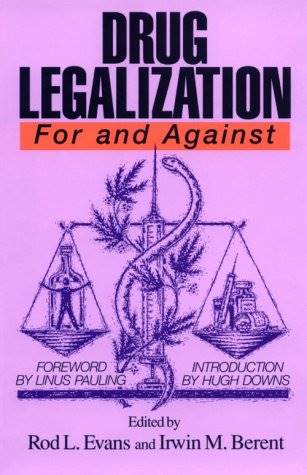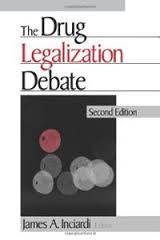 On July 27, 2014, the New York Times Editorial Board endorsed the legalization of marijuana--the latest salvo in the cultural wars surrounding drug policy in the United States. Debates over cannabis policy--at least the modern era of such debates--have raged for more than half a century, with arguments growing more nuanced from each side of the anti- and pro-legalization movements. These debates, focused primarily on the psychopharmacology of cannabis and the personal and social costs of cannabis use and cannabis control policies, have rarely if ever included the voices of people recovering from cannabis dependence and/or other drug dependencies. People in recovery from addiction are no more likely to express uniform agreement on drug policy than any other group of people in the U.S., but they may share one singular concern: How will future changes in drug policy affect the availability of alcohol- and drug-free space in local communities and the health of people in recovery?
On July 27, 2014, the New York Times Editorial Board endorsed the legalization of marijuana--the latest salvo in the cultural wars surrounding drug policy in the United States. Debates over cannabis policy--at least the modern era of such debates--have raged for more than half a century, with arguments growing more nuanced from each side of the anti- and pro-legalization movements. These debates, focused primarily on the psychopharmacology of cannabis and the personal and social costs of cannabis use and cannabis control policies, have rarely if ever included the voices of people recovering from cannabis dependence and/or other drug dependencies. People in recovery from addiction are no more likely to express uniform agreement on drug policy than any other group of people in the U.S., but they may share one singular concern: How will future changes in drug policy affect the availability of alcohol- and drug-free space in local communities and the health of people in recovery?
The issue of concern is not simply the legal availability of drugs, but the larger visibility and status of these drugs within American communal life. A problem with the legalization of any drug in a free-market economy is that those who profit from the growth, manufacture, sale, and use of the drug invest enormous resources in expanding the pool of people who use their product, expanding when and where the drug may be purchased and used, influencing norms on socially approved frequency and quantity of use, creating more biologically rewarding forms of the drug, and introducing novel and more efficient methods of drug administration. The history of American alcohol and tobacco products and their advertising and related promotional strategies offer vivid examples of these processes. Similarly, effective public health strategies aimed at the containment of drug problems seek to affect these same dimensions in opposite directions, e.g., reducing global consumption, reducing drug access to vulnerable populations, limiting dose exposure per use event and cumulative lifetime exposure, limiting the public space where use can occur, and restraining promotional forces.
The initiation and maintenance of addiction recovery is profoundly influenced by the physical and cultural environment. Recovery itself is often marked by a shift from drug-saturated environments, relationships, and social rituals to recovery-supportive environments, relationships and social rituals--what I have referred to as a journey from a culture of addiction to a culture of recovery. "People, places and things" (PPTs) play a role in both addiction maintenance and recovery maintenance, with each of those PPT dimensions changing in the transition from self-harm to self-health. But here's the rub. Such transitions require more than the will to recover; they require community space supportive of recovery. To state this simple fact is by no means a call for complete alcohol and drug prohibition, but it is a call to examine the ratio within each community between drug-friendly space and recovery-friendly space. People in recovery ought to be able to have space in their communities in which they can pursue family life, work, leisure, and worship without being constantly bombarded by sensory cues (PPTs) that can elicit drug craving and, at times of heightened vulnerability, trigger drug-seeking behavior.
 If we as a country are serious about promoting recovery in response to one of the world's highest per capita rates of addiction, then we need to create and protect the community space in which recovery can flourish and limit the space that serves as an incubator for the development of drug problems. Any discussion of changes in drug control policies should include discussion of what this change will mean for more than 20 million Americans in recovery (not counting those in recovery from nicotine dependence) as they seek to build and sustain a recovery-based lifestyle in their local communities. Increased exposure of all citizens to public displays of drug use and intoxication, drug-impaired co-workers, drug-impaired drivers, and a social milieu filled with drug paraphernalia, drug advertising, and passive drug contact raises questions about the quality of community life and public safety, but for people in recovery and their families such exposure may have far more personal consequences. Any policy discussions of marijuana legalization should include the voices of people in recovery and should include a serious discussion about recovery space. Such space must be protected regardless of the future legal status of psychoactive drugs.
If we as a country are serious about promoting recovery in response to one of the world's highest per capita rates of addiction, then we need to create and protect the community space in which recovery can flourish and limit the space that serves as an incubator for the development of drug problems. Any discussion of changes in drug control policies should include discussion of what this change will mean for more than 20 million Americans in recovery (not counting those in recovery from nicotine dependence) as they seek to build and sustain a recovery-based lifestyle in their local communities. Increased exposure of all citizens to public displays of drug use and intoxication, drug-impaired co-workers, drug-impaired drivers, and a social milieu filled with drug paraphernalia, drug advertising, and passive drug contact raises questions about the quality of community life and public safety, but for people in recovery and their families such exposure may have far more personal consequences. Any policy discussions of marijuana legalization should include the voices of people in recovery and should include a serious discussion about recovery space. Such space must be protected regardless of the future legal status of psychoactive drugs.